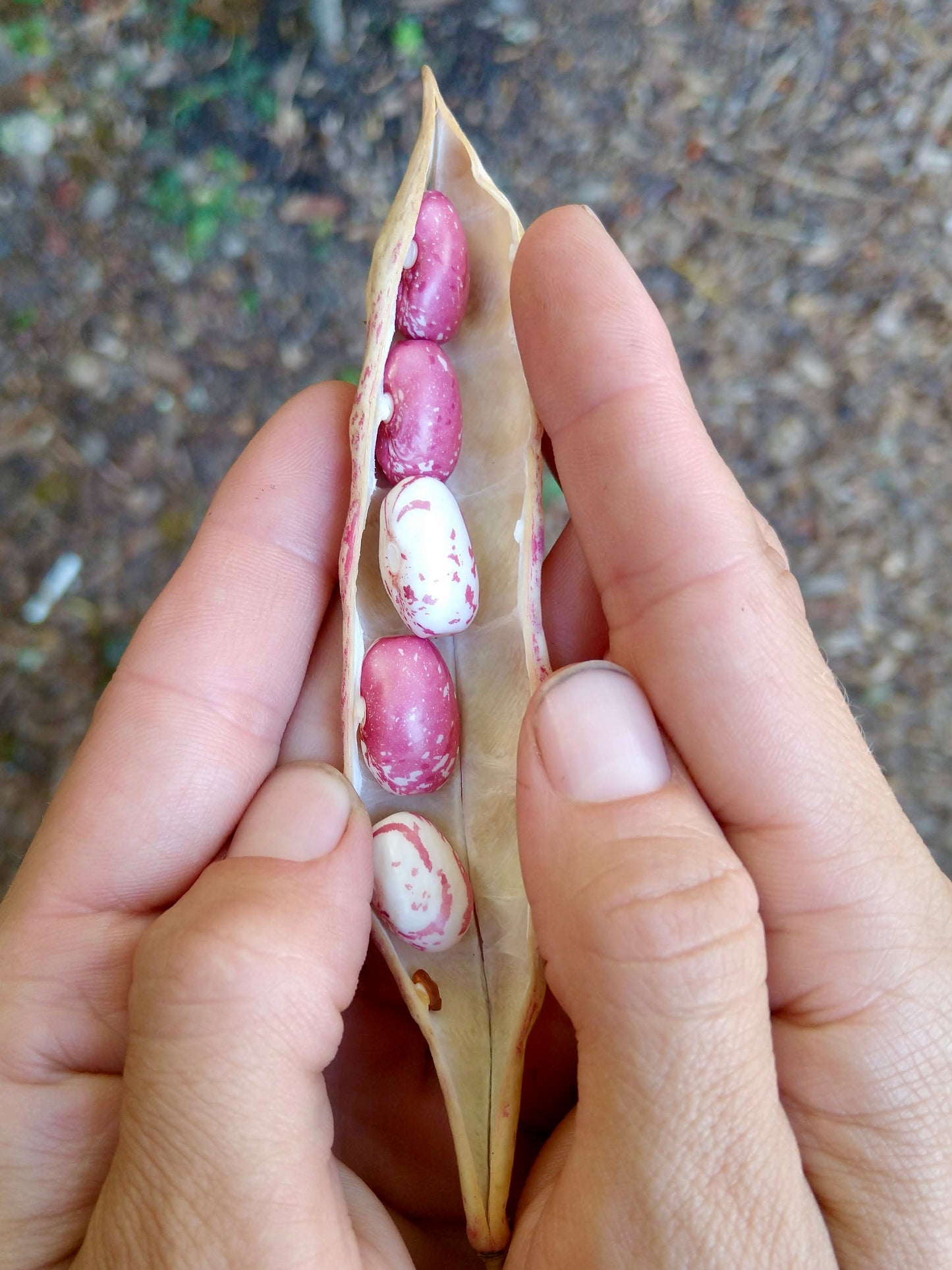
A seed is the full circle, every beginning and end.
Seed bearing plants evolved long before humans roamed the Earth, but it was these plants that supported and evoked our evolution of taste, smell and instinctual ability to find food in the wild. It is a natural instinct for us to collect and save seeds. Let's tap back into that intuitive knowledge and connect with plants in every stage of their lifecycle.
Tip 1: TIMING
Later summer and throughout autumn are the seasons seeds become most abundant and easily harvestable. It's best to collect during a dry week, when seed heads are not damp from rain or morning dew. Begin with things you recognize from summer. Many of you are growing seeds from our collection of nigella, poppies, and lunaria but what about other plants growing in your garden or neighborhood? It's so exciting to begin your seed saving journey and we are here to foster that experience.
Wild fennel with its easily recognizable scent and sweet taste, seeds clearly visible, their heads held high on giant umbels. It's best to harvest seed right after the green seeds mature but you can even cut the whole stock while the seeds are still green and hang to dry, they will mature during this process. I have also harvested seed well after maturity, in the dead of winter and the seeds were still viable, so don't be afraid to experiment, the only way to develop a skill for seed saving is by doing, again and again. You'll get the feel for it.
Tip 2: OBSERVATION

Observation is key. Notice the California poppy as it forms those long green seed pods? Then they dry turning a yellow brown and when ripe, the seeds will burst from the pods at the slightest touch. Try learning that sweet spot, right before they burst, harvesting the pods before they are fully dry. However, when harvesting the breadseed poppy, you need to wait until their little crowns lift and they dry out on the stem before gently turning them over to collect the wealth of seeds from those lovely pods. Even though both are poppies, the timing and method of seed harvest is quite different.
Experience and experimentation is the best way to find that sweet spot, the perfect harvest window for each plant. Smaller, more inconspicuous seeds require your touch to harvest properly. Lavender, basil, thyme, fennel, oregano, celery, strawberry, carrot, lettuce, purslane, and mint are great examples of teeny tiny seeds. To harvest these, wait for a non windy day! Then, bring a paper bag with you to catch the seeds. Slide your hand around the base of the dried flowers and up towards the top. Gently rub your hands together inside the bag to release the tiny seeds. Afterwards, put your hands to your face and inhale deeply, enjoying the benefits of aromatherapy from the dried herbs being crushed in your hands.
Feel, touch, smell, taste, watch-use all your senses. Listen to the seeds calling you, "Harvest me!"
Tip 3: SELECTING SEEDS

Selecting your most vibrantly healthy crops to save seeds from will ensure optimal success when planting the next season.
When saving seeds such as our bread seed poppies, we organize by seed head size and tallest stem. This way, we can isolate the largest, healthiest ones and continue growing the best performing poppies year after year. But sometimes we want to harvest seeds from a unique version of a plant, therefore, we select and label seeds from that harvest.
It's important to note that not all seeds will be viable! Be sure to give larger seeds such as squash, melons, and sunflowers a squeeze test before hand. Do this by squeezing an individual seed to feel for density within the shell. If it’s hollow, there isn’t actually a seed inside and you can simply compost these ones.
When saving seeds such as our bread seed poppies, we organize by seed head size and tallest stem. This way, we can isolate the largest, healthiest ones and continue growing the best performing poppies year after year. But sometimes we want to harvest seeds from a unique version of a plant, therefore, we select and label seeds from that harvest.
It's important to note that not all seeds will be viable! Be sure to give larger seeds such as squash, melons, and sunflowers a squeeze test before hand. Do this by squeezing an individual seed to feel for density within the shell. If it’s hollow, there isn’t actually a seed inside and you can simply compost these ones.
Tip 4: SEED STORAGE
It's heartbreaking to open up a jar of moldy seeds! Here are helpful tips we've learned over the years to best preserve seeds.
 Once you harvest seeds, place them into a vessel with the lid open for a week in a shaded but warm environment. Mason jars, to-go containers, old vitamin or medicine bottles are perfect. And speaking of old medicine or vitamin jars, be sure to keep those desiccants or little dry packets that come inside most bottles as they are the perfect addition to your new seed saving bottle or jar. They will keep seeds dry once you seal up the container.
Once you harvest seeds, place them into a vessel with the lid open for a week in a shaded but warm environment. Mason jars, to-go containers, old vitamin or medicine bottles are perfect. And speaking of old medicine or vitamin jars, be sure to keep those desiccants or little dry packets that come inside most bottles as they are the perfect addition to your new seed saving bottle or jar. They will keep seeds dry once you seal up the container.
 Be sure to label your seeds with the date and type of plant! It's a fun experiment to guess what's in the jar the following year hoping for the best, but also, a bit stressful waiting to see what comes up in bloom!
Be sure to label your seeds with the date and type of plant! It's a fun experiment to guess what's in the jar the following year hoping for the best, but also, a bit stressful waiting to see what comes up in bloom!Store your seeds in a place away from excessive heat and keep them out of the sun too. We like to keep ours in a box in the pantry or in a drawer in the office.
Happy saving friends!
With love from all of us at Sacred Elements
